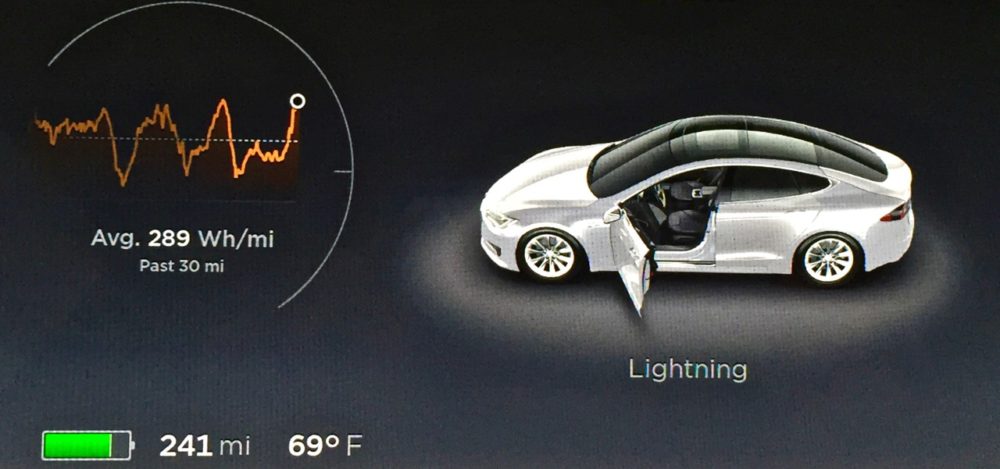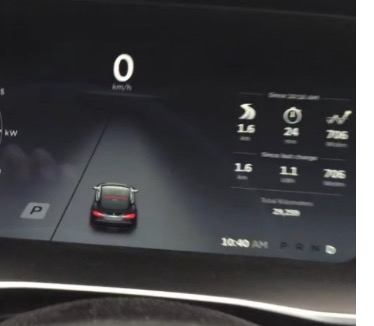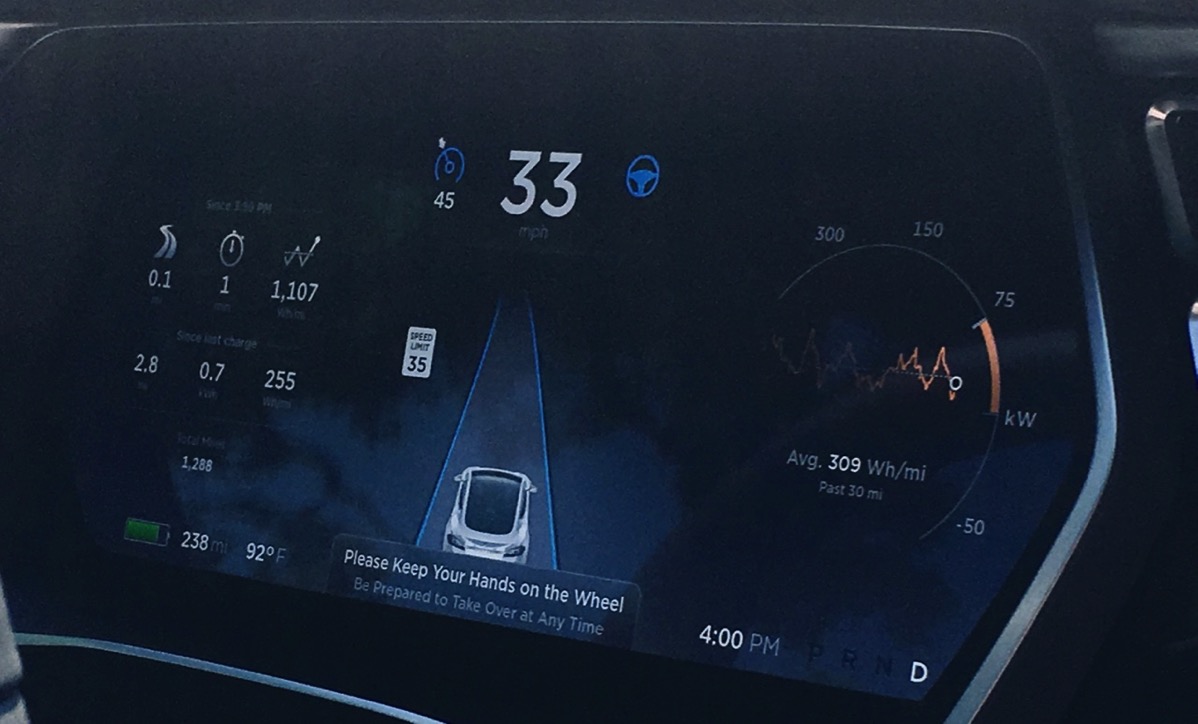
Odometer: 1,503
As I had planned last week, I brought Lightning to the Dedham, MA service center on Monday to have the rear seat looked at. They took one look and said, “Let us fix that”. So they did repaired the leather while I waited, and Lightning is back to being flawless again. The cost was covered under warranty.
While I was there, I got to watch several other customers come in with other problems. One fellow had a flat tire down on Cape Cod during July 4 weekend and was in the process of getting a new tire and wheel to replace one that the service center loaned him late one night after it had closed. Another woman came in to return the model S that had been loaned her when she had encountered a problem. Despite the fact that they were slammed with new car deliveries (the lot was full of newly delivered cars), the service folks were smiling and bending over backwards to help folks.
One other thing that I observed while waiting for my car was that there didn’t seem to be the wall most dealerships create between the customer and the people who actually work on the cars. Several times, I observed mechanics coming out to talk to customers about what they saw and on occasion, just to chat with the people who had brought their cars in.
I believe that some of this difference in service “feel” is that Tesla’s goal is to build cars that don’t really need service. Electric cars have fewer moving parts than internal combustion cars, so they should be intrinsically more reliable. While that may not yet be the case compared to best-in-class brands such as Lexus and Toyota, Tesla has set itself a lofty goal to eventually better their reliability by about an order of magnitude.
As Tesla’s cars actually approach this goal, then the role of the service center has to be fundamentally different from that of a ICE service center. With traditional ICE cars, the car is sold with a very thin margin, and sometimes at a loss to the dealer. Why do they do that? Because the service center makes up for that loss with highly profitable maintenance visits. That’s why that 15,000 mile checkup at your local car dealer runs $500-$600 instead of the roughly $200 you might spend at a local service station.
Tesla is different because 1) assuming it achieves its reliability goals, Tesla can’t rely on its cars needing service regularly, and 2) because of #1, service appointments have to be great experiences for its customers, which will make them want to bring their cars in whenever something goes amiss. Now, I know some Tesla service centers struggle to achieve this level of service, but based on my sample of one visit to Dedham, it does appear Tesla tries to treat customers more as people than as captive revenue sources. I, for one, appreciate the difference. I’m not the only one either; even though Consumer Reports doesn’t recommend Teslas, Tesla model Ss continue to rate as having the highest consumer satisfaction rating on Consumer Reports.


 It was there that for the first time, I saw a big square P show up on my dash, indicating that Lightning saw an opportunity to
It was there that for the first time, I saw a big square P show up on my dash, indicating that Lightning saw an opportunity to 
